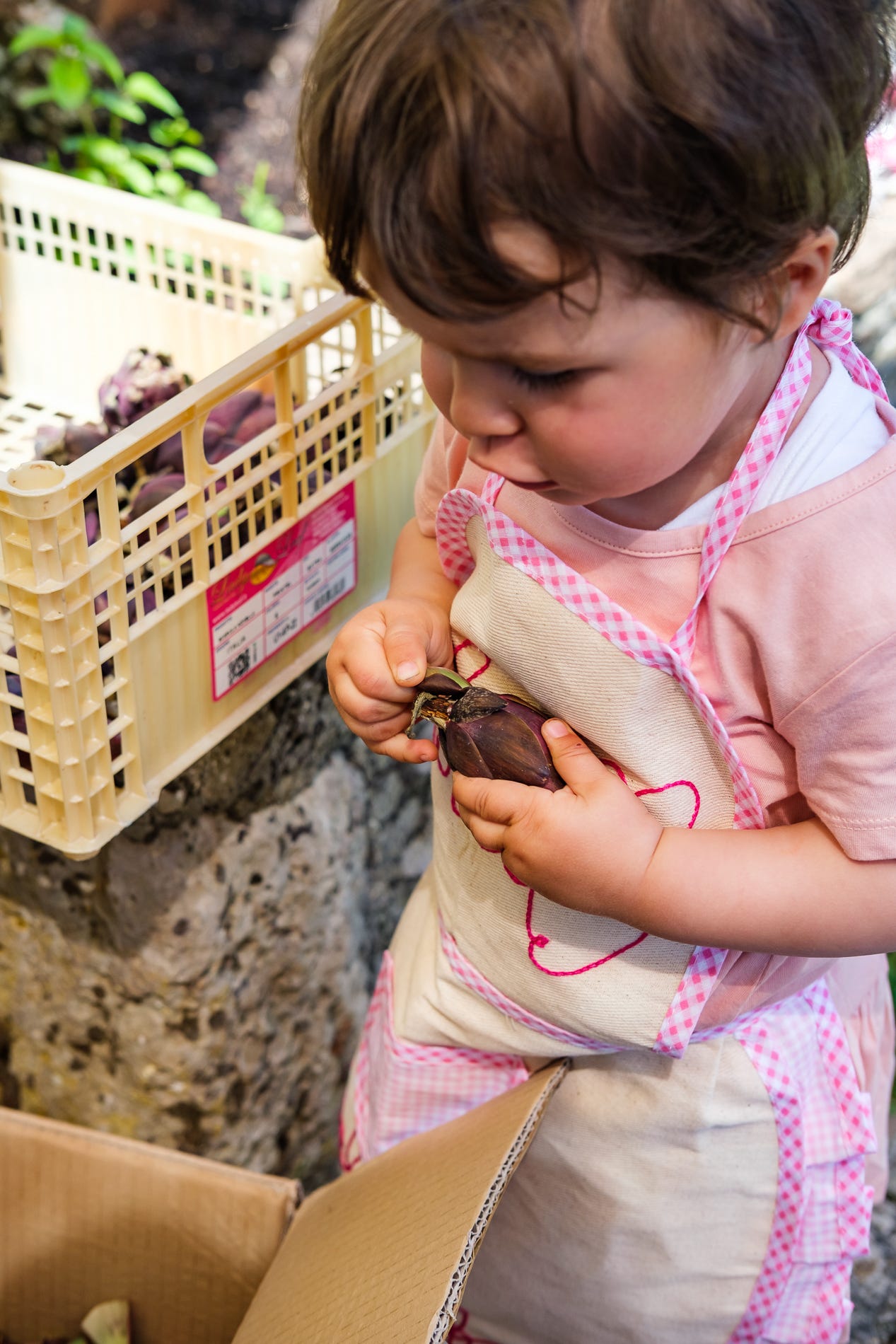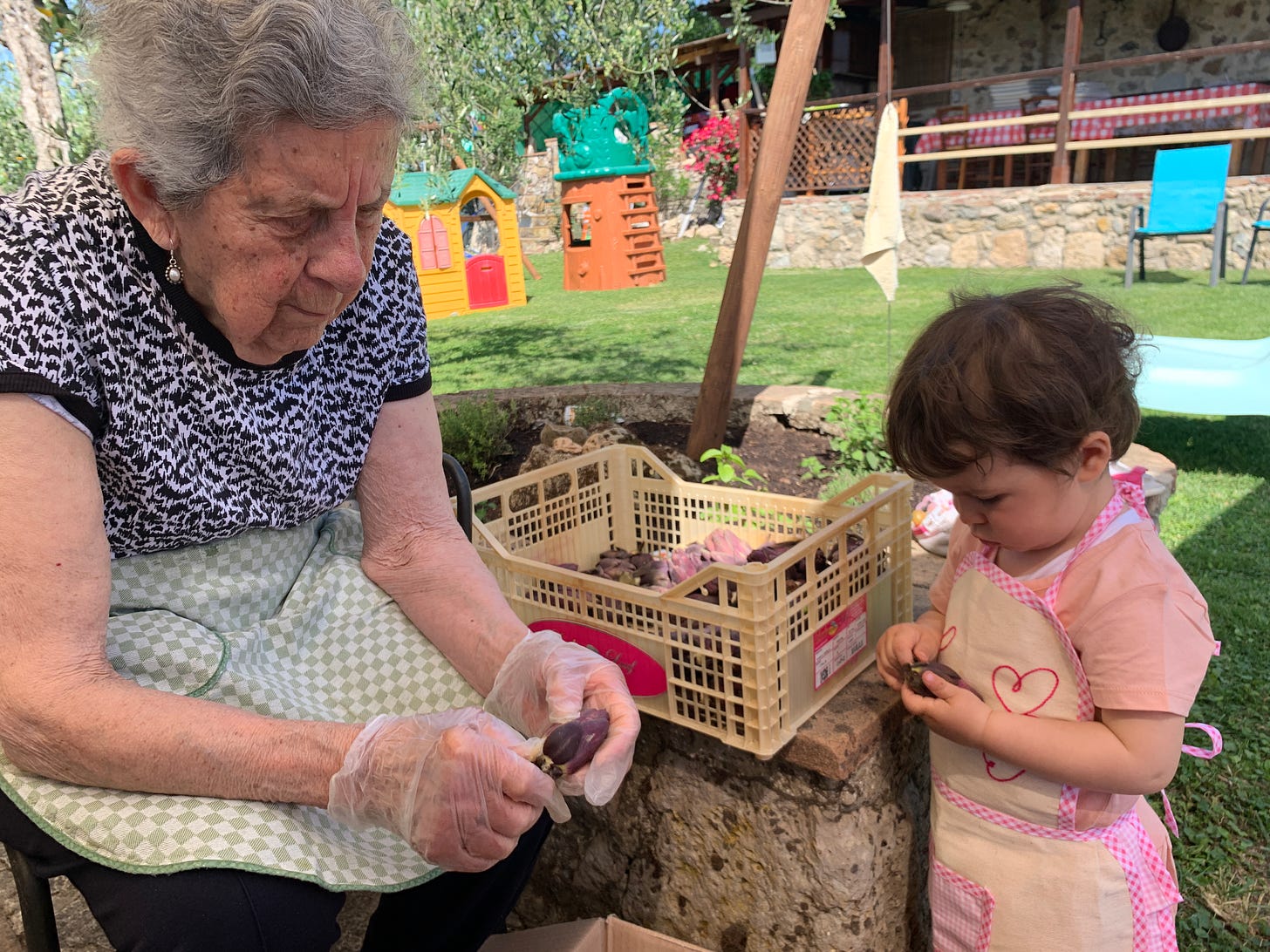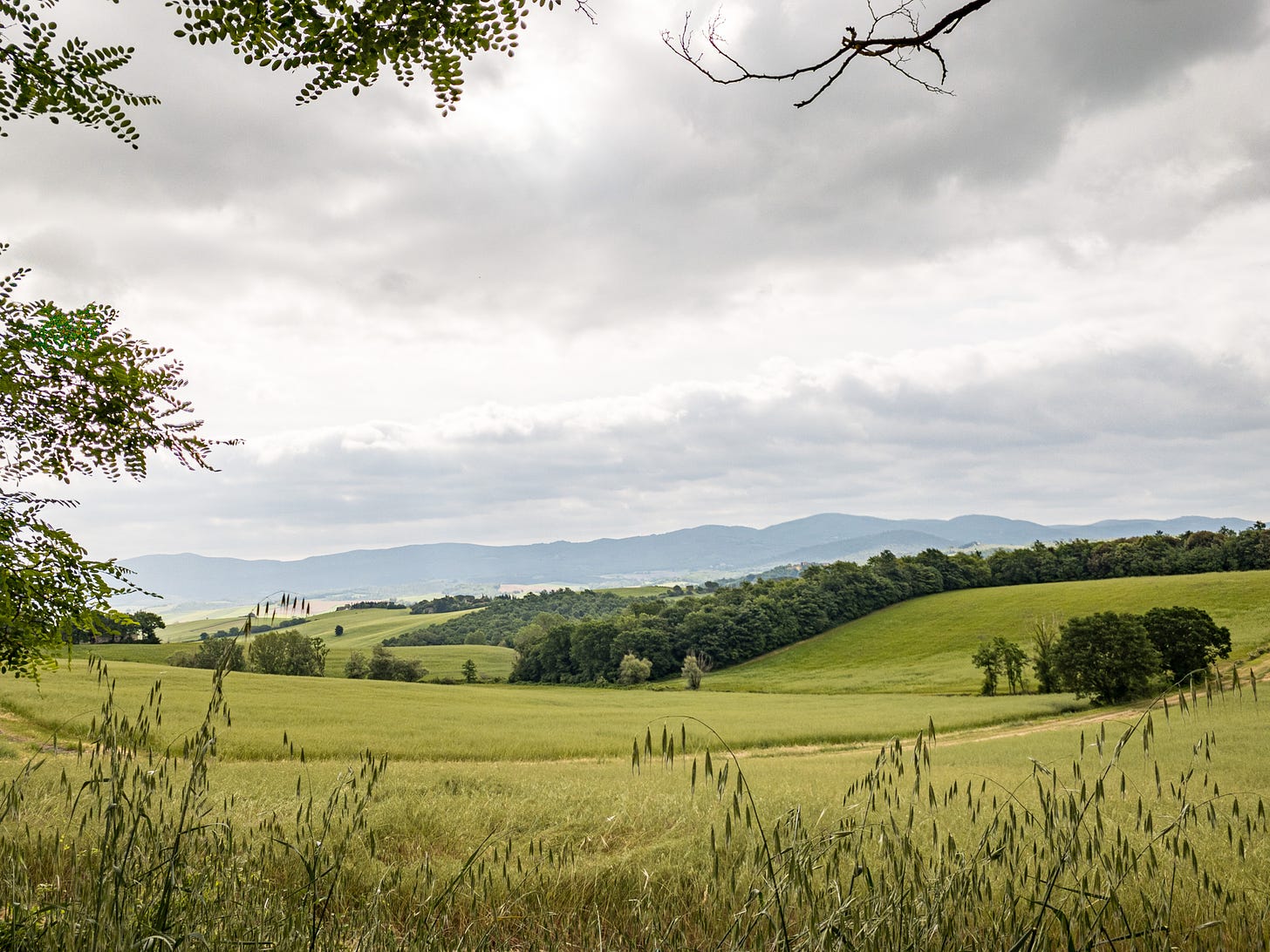Trimming baby artichokes with Livia and nonna
Livia and the baby artichokes | What I've been listening to | What I've been cooking (and burning)
Seated in the shade of the olive trees with grandma, we were going through 5 kilos of baby artichokes bought at a bargain at the market. First, we had to trim them, then we would swiftly plunge them in a large bowl of acidulated water, where the two squeezed lemons were still floating. Then, it would come the time to blanch them in water and white wine vinegar, dry them overnight, and eventually pack them into my Bormioli jars, to be covered with extra virgin olive oil. The same extra virgin olive oil that had been produced pressing the olives picked from the very same olive trees we were sitting under. It would make a full circle.
The last time I had turned my eyes from the case of artichokes, Livia was sitting at her pink plastic table drawing doodles with thick crayons. Sun! Sky! Nonno! Shoes! she would exclaim, describing in her tentative language her sketches.
Then I saw her tiny, chubby hand reaching out for an artichoke.
Without hesitation, she held it firmly with her left hand and started pulling out the hard, dark leaves, one by one, all around the artichoke. If at the beginning we had to tell her when to stop, after a while she understood when the artichoke was trimmed enough, and she would hand it to me with a grin.
Brava! I exclaimed at every artichoke, marvelling at how she had grasped the technique just by watching us.
I looked at nonna Marcella, almost 94 years old, proudly praising her great-granddaughter for every artichoke leaf, and then at Livia, who will turn 2 at the end of August. Separated by 92 years, they were deeply connected in that moment, creating memories that I will be cherishing forever.
I had been wondering for months if I should have read more books about how to raise a child, how to develop their independence and emotional intelligence, feeling clueless in front of Livia’s tantrums and meltdowns (terrible two, I see you). Then, all of a sudden, that authentic moment of family life gave me more confidence and insight that any manual or self-help book I could read.
An example, I just have to be a good, reliable example, and everything will eventually fall into place. As she learned to trim an artichoke, she will learn to sit at the table sharing the meal with her family, appreciate food without a sense of guilt, and wash her hands before dinner and her teeth before bed.
Growing up in the countryside won’t be an impairment, but a way to connect deeply with the rhythms of nature. She’ll have long summers and many basketfuls of green beans to trim, tomatoes to bottle, eggs to be collected in the chicken coop, and blackberries to be picked from the hedgerows. And I’m excited to share these moments with her.
When you join our subscription-based newsletter, you are actively contributing to the making of Letters from Tuscany.
In addition, you will receive exclusive new recipes, you can comment and create a relationship with the other readers of this newsletter, and you can take part in the monthly Live Talks and Cook Along.
What I’ve been listening to
I was preparing my lesson on recipe writing for Scuola Holden - a school with the most diverse workshops and courses about writing and storytelling based in Turin, where a couple of years ago I took two courses on memoir writing - so I went searching for interesting podcasts to listen to while walking.
I’m always struggling to carve out some precious me-time to learn and exercise, so I'm happiest when I can pair the two things together. I found very enlightening these two conversations with Melissa Clark, one of the most prolific food writers out there and a New York Times columnist, about recipe writing. She revealed that she puts clarity over her ego when she writes her recipes, and as a recipe writer I truly relate.
The Amateur Gourmet Podcast, Melissa Clark's Apple of Truth.
Food 360 with Marc Murphy, The Art of Recipe Writing with Melissa Clark
What I’ve been cooking
I wanted to perfect the recipe for pici all’aglione (you’ll hear about pici and aglione in one of the next blog posts), and I managed to forget the garlic happily sizzling with a dash of white wine in the olive oil. Twice. If the first time I simply burned the garlic to a charcoal status, the second time the pan somehow exploded, sending spurts of oil all over my kitchen.
But I had also a remarkable success following two recipes from the New York Times Cooking. - One day we have to talk about the sheer pleasure of following a recipe that you know is going to work -
So this is what I made:
Roasted Zucchini With Garlicky Bread Crumbs and Mozzarella, by Melissa Clark
Chickpea and Herb Fatteh, by Yotam Ottolenghi










What a delightful recounting of the importance of motherhood! An absolute treasure! And one of the very reasons I write about family, food and traditions! Thank you!